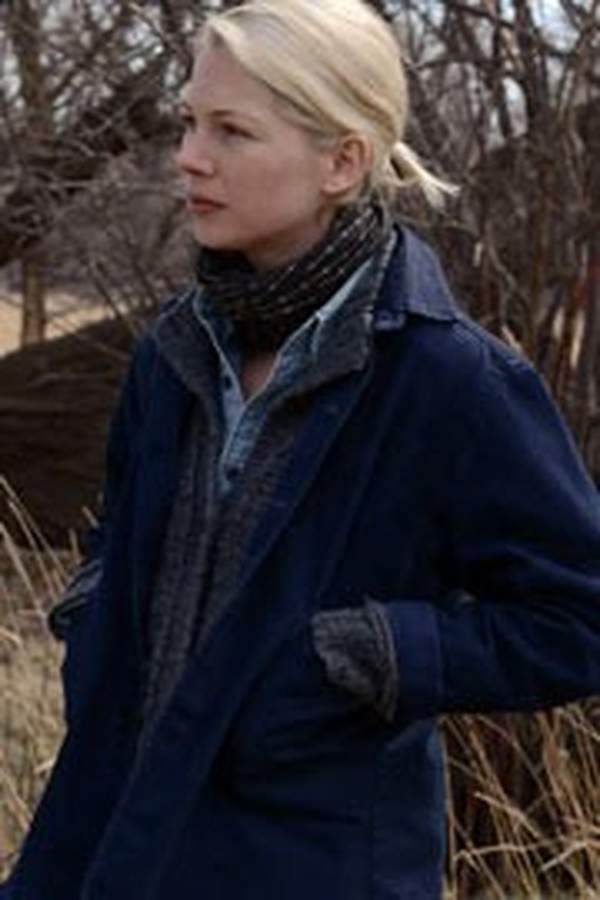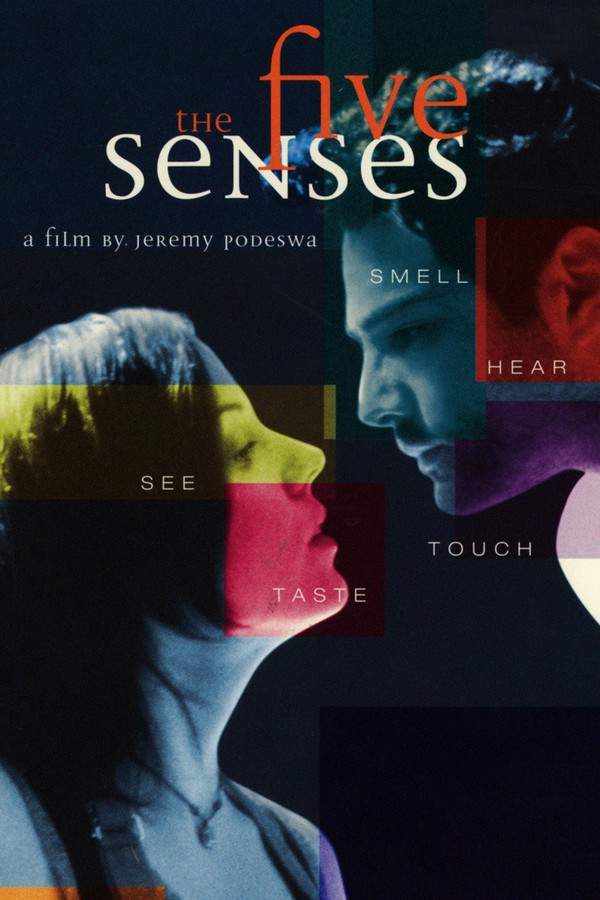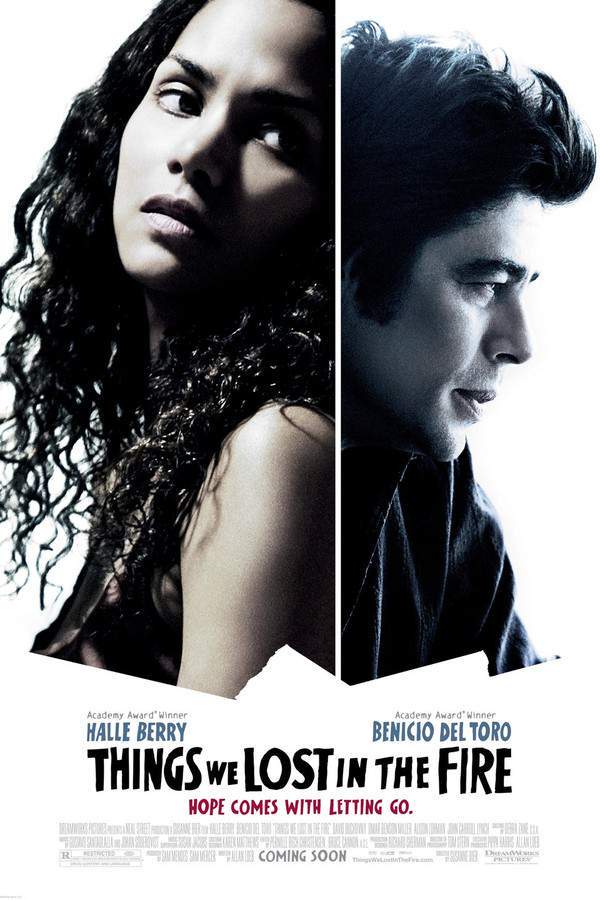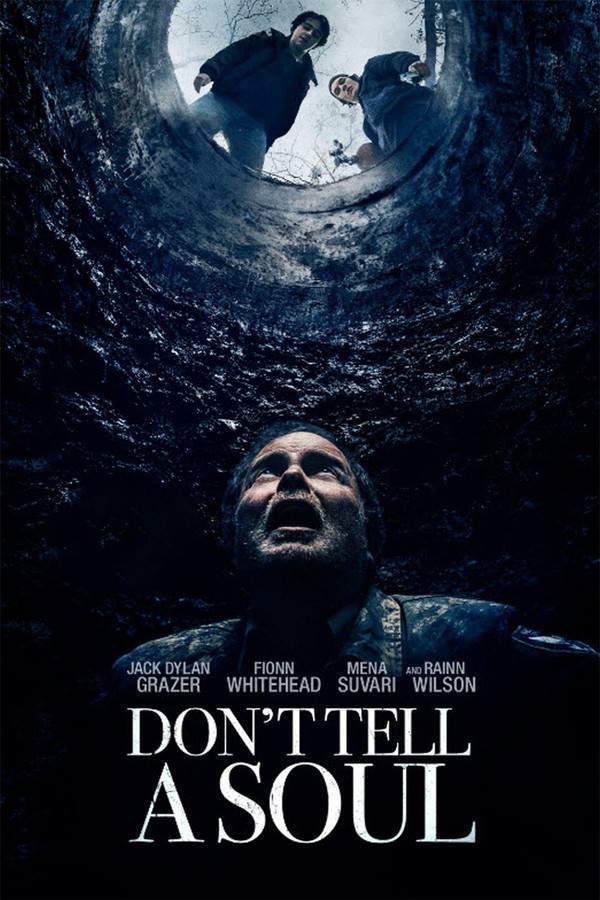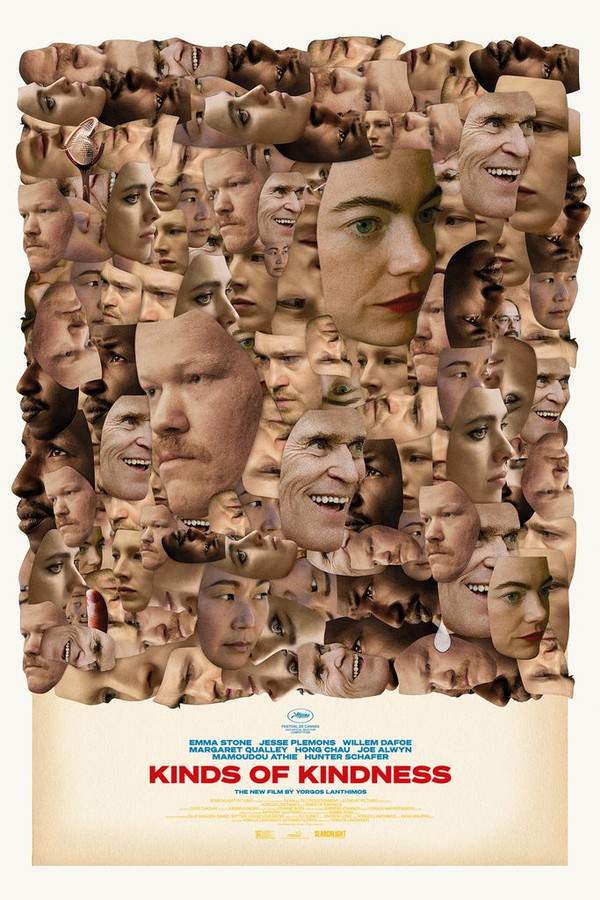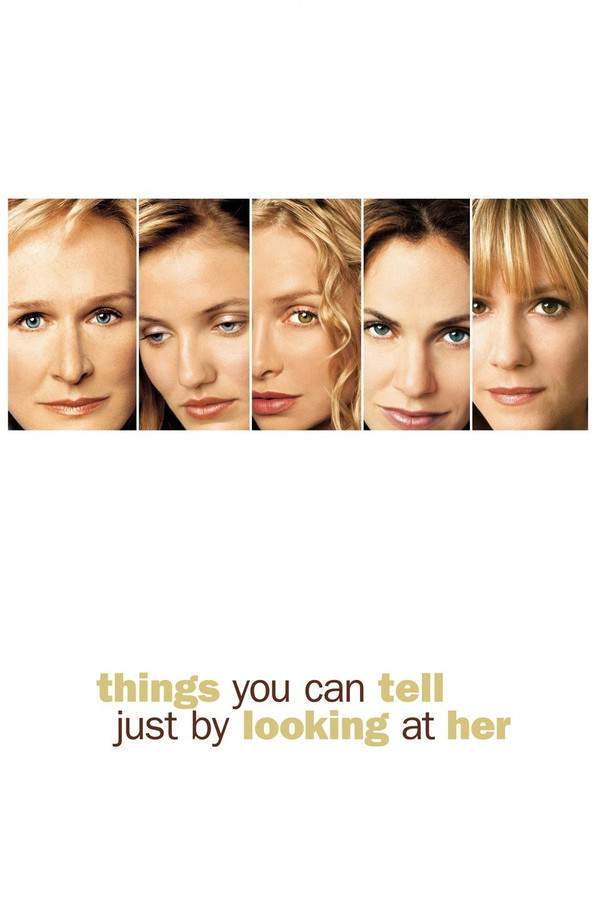
Things You Can Tell Just by Looking at Her 2000
Directed by

Rodrigo García
Made by

Gaga
Test your knowledge of Things You Can Tell Just by Looking at Her with our quiz!
Things You Can Tell Just by Looking at Her Plot Summary
Read the complete plot summary and ending explained for Things You Can Tell Just by Looking at Her (2000). From turning points to emotional moments, uncover what really happened and why it matters.
In the sun-drenched expanse of the San Fernando Valley, Detective Kathy (Kathy Baker) and her partner probe the mysterious circumstances surrounding the suspected suicide of an unidentified woman. During the investigation, we meet Dr. Keener (Holly Hunter), a middle-aged physician torn between caring for her aging mother and confronting her own profound feelings of solitude. Her emotional journey reveals a struggle marked by an aversion to intimacy and an unquenchable yearning just beneath the surface. As she anxiously awaits phone calls from male colleagues, the film offers a raw look into her inner conflicts, reflecting both frustration and hope.
In her search for connection, Dr. Keener draws comfort from Christine (Calista Flockhart), a tarot card reader whose life is tightly woven with that of her partner Lilly, who faces a dire battle against a serious illness—that could potentially be cancer. This intricate web of relationships acts as a refuge for Dr. Keener, wherein she briefly evades the void that has settled deep within her soul.
Meanwhile, Rebecca (Cameron Diaz), a high-achieving bank manager who is “not big on regrets,” becomes embroiled in a tricky love triangle. After three years of an affair with a married man named Robert, Rebecca’s world is shaken by an unexpected pregnancy. In search of answers, she approaches Dr. Keener for advice on possibly terminating her pregnancy. Yet, before making a decisive choice, she experiences a short-lived romance with Walter, a subordinate whose simplicity and charm offer her a temporary escape from her troubled reality.
In a nearby community, Rose, a single mother and children’s book author, finds herself smitten with her new neighbor, a little person whose endearing mannerisms brighten her life. Little do they realize that their innocent interaction is about to lead them down a surprising path when they uncover his significant involvement in various risqué activities.
As Detective Kathy delves deeper into the suicide investigation, she cannot help but feel an attraction towards the medical examiner, which culminates in him asking her out. The film reaches an emotional climax when Dr. Keener has a chance encounter with Walter, weaving their stories together in a poignant reminder that life is knitted together through intricate connections.
Carmen’s haunting presence subtly ties together the film’s narrative. Her character emerges in five pivotal scenes, each marking a significant moment in the lives of the protagonists. Initially, we catch a glimpse of her meandering past Dr. Keener’s house—her footsteps echoing the quiet before turmoil strikes. Soon after, she walks alongside Rebecca, their shared journey underscoring the complex nature of human relationships. As the plot unfolds, Carmen reappears in a grocery store, her cart laden with mundane items, yet highlighting an underlying longing that is anything but ordinary.
As darkness settles, we find Carmen outside Christine’s apartment, her solitary silhouette a testament to the heavy burden of heartbreak. This moment captures the frail nature of human emotions, hinting at the delicate chaos of existence. Ultimately, Carmen’s final appearance within the sterile confines of the coroner’s lab serves as a stark depiction of the severe impacts love can bring when it becomes irreversibly shattered.
As the story progresses, the intertwining paths of the characters converge, illustrating the cyclical nature of human experiences. Carol, an observer in the narrative, recounts Carmen’s story, revealing that her return to her hometown was fueled by a desire to reconnect with an ex-lover. With each recollected moment, Carmen’s journey emerges as a carefully crafted preparation for this significant reunion.
From her initial search for belonging to carrying the fateful red dress—foretelling her tragic trajectory—the scenes depicting Carmen reflect the depth of her struggles. They encapsulate the duality of her existence, marked by mundane actions that obscure her internal strife. In her heartbreaking wanderings, she ultimately confronts the overwhelming weight of her grief, making the harrowing choice of suicide a desperate bid to escape the agony of a lost love that mirrored her past heartbreak.
Things You Can Tell Just by Looking at Her Timeline
Follow the complete movie timeline of Things You Can Tell Just by Looking at Her (2000) with every major event in chronological order. Great for understanding complex plots and story progression.
Investigation Begins
Detective Kathy and her partner initiate an inquiry into the suspected suicide of an unidentified woman. This kicks off a deep dive into the complexities surrounding the woman's life, providing a backdrop to the intertwining stories that will unfold.
Dr. Keener's Internal Struggle
Dr. Keener grapples with caring for her aging mother while dealing with her own feelings of solitude. This emotional journey reveals her aversion to intimacy and a deep yearning for meaningful connection, as she yearns for phone calls from male colleagues.
Connection with Christine
In her search for companionship, Dr. Keener begins to draw solace from Christine, a tarot card reader. Their relationship serves as an escape for Dr. Keener from the profound emptiness she feels in her life, as Christine’s life is also closely tied to her partner, Lilly, who is facing a serious illness.
Rebecca’s Dilemma
Rebecca, a successful bank manager, becomes embroiled in a love triangle after discovering she's pregnant with a married man's child. Seeking guidance from Dr. Keener, she faces a pivotal decision about her pregnancy while exploring fleeting feelings for her co-worker Walter.
Rose's New Neighbor
Rose, a single mother and children's book author, finds herself enchanted by her new neighbor, a little person. Their innocent interactions hint at a deeper connection that ultimately leads to unexpected revelations about his unique lifestyle.
Kathy's Attraction
As the investigation progresses, Detective Kathy feels an unexpected attraction to the medical examiner. This tension escalates when he bravely asks her out, adding a layer of emotional complexity to her professional life.
Chance Encounter with Walter
Dr. Keener's chance meeting with Walter leads to a poignant moment that intertwines their stories. This encounter reinforces the idea that life is a tapestry of connections, showcasing the emotional threads that bind people together.
Carmen's First Appearance
Carmen, a character symbolizing the complexities of human emotions, appears early in the film while passing by Dr. Keener’s home. Her seemingly insignificant actions foreshadow the turmoil that will later envelop the main characters.
Carmen's Connection with Rebecca
Carmen walks alongside Rebecca, creating a connection that underscores the intricate nature of relationships. Their meeting highlights the struggles both characters face, weaving their narratives into the broader theme of loneliness.
Grocery Store Encounter
Carmen reappears in a grocery store, where her mundane shopping trip conceals a deep-seated longing for connection. This scene portrays the characters' daily struggles, emphasizing the emotions that lie beneath ordinary appearances.
Carmen Outside Christine's Apartment
As night falls, Carmen's solitary figure is seen outside Christine’s apartment. This moment serves as a haunting reminder of heartbreak and the emotional burdens carried by the film’s characters, presenting a poignant view of solitude.
Final Appearance in the Coroner's Lab
Carmen makes her final appearance in the sterile setting of the coroner’s lab. This chilling scene highlights the devastating effects of love and loss, marking a stark contrast between life’s vibrancy and the harsh reality of grief.
Cyclical Nature of Connections
As the narrative unfolds, the intertwined paths of the characters illustrate the cyclical nature of human experiences. This reflects on how personal journeys are often connected, both through shared experiences and the impact of individual choices.
Carol's Reflection
Carol, serving as an observer within the story, recounts Carmen's tale and her motivations for returning to her hometown. This reflection adds depth to Carmen's character, revealing her longing for an ex-lover and the shared pain of love lost.
Carmen's Tragic Choice
The story culminates in Carmen's heartbreaking decision, portrayed as a desperate escape from overwhelming grief. This moment epitomizes the tragic nature of human emotions, showcasing the profound impact of love and loss on individual lives.
Things You Can Tell Just by Looking at Her Characters
Explore all characters from Things You Can Tell Just by Looking at Her (2000). Get detailed profiles with their roles, arcs, and key relationships explained.
Kathy
Detective Kathy showcases a blend of strength and vulnerability as she investigates a suicide while grappling with personal attraction. Her character embodies dedication to her work while navigating her own emotional complexities.
Dr. Keener
Dr. Keener is a middle-aged physician experiencing loneliness and a yearning for intimacy. Her character reflects the challenges of balancing personal responsibilities with the pursuit of connection, making her journey both poignant and relatable.
Rebecca
Rebecca is a high-achieving bank manager ensnared in a love triangle, driven by a yearning for clarity amid chaos. Her character's choices highlight the struggles faced by women in relationships and the emotional toll of unexpected circumstances.
Christine
Christine is a tarot card reader whose life is intertwined with that of her partner, reflecting the theme of seeking deeper connections. Her character offers insight into the complexities of love and the search for guidance during turbulent times.
Carmen
Carmen appears as a haunting figure whose presence ties together the lives of the main characters. Her poignant journey underscores the fragility of human emotions and the profound impacts of love and loss.
Things You Can Tell Just by Looking at Her Settings
Learn where and when Things You Can Tell Just by Looking at Her (2000) takes place. Explore the film’s settings, era, and how they shape the narrative.
Time period
The film does not specify a particular time period, but the themes of modern relationships and emotional struggles are universal and timeless. This allows for a relatable exploration of personal crises in a contemporary setting.
Location
San Fernando Valley
The San Fernando Valley is a sprawling urban area known for its sunny weather and diverse neighborhoods. It's a setting that encapsulates both the vibrancy and the underlying struggles of everyday life, making it a compelling backdrop for stories of love, loss, and self-discovery.
Things You Can Tell Just by Looking at Her Themes
Discover the main themes in Things You Can Tell Just by Looking at Her (2000). Analyze the deeper meanings, emotional layers, and social commentary behind the film.
💔
Heartbreak
Heartbreak is a central theme as characters navigate the complexities of love and loss. Their journeys highlight the pain of unfulfilled relationships and the quest for connection, showcasing how emotional turmoil often intertwines with moments of intimacy.
🧩
Connections
The film explores the intricate web of human connections, illustrating how each character’s life is intertwined with others. These relationships provide refuge and complicate their emotional landscapes, reflecting the importance of connections in coping with loneliness.
🔮
Self-Discovery
Self-discovery is a recurring theme as characters confront their innermost fears and desires. Through their struggles, they seek clarity and understanding, reflecting the universal journey towards emotional fulfillment and personal identity.

Coming soon on iOS and Android
The Plot Explained Mobile App
From blockbusters to hidden gems — dive into movie stories anytime, anywhere. Save your favorites, discover plots faster, and never miss a twist again.
Sign up to be the first to know when we launch. Your email stays private — always.
Things You Can Tell Just by Looking at Her Spoiler-Free Summary
Discover the spoiler-free summary of Things You Can Tell Just by Looking at Her (2000). Get a concise overview without any spoilers.
In the sun‑kissed sprawl of Los Angeles, a quiet drama unfolds among a handful of women whose lives intersect like the overlapping lanes of a bustling freeway. The film moves with a measured, almost lyrical pace, letting the city’s golden light and lingering heat shape a mood that feels both intimate and expansive. Themes of love, loss, and the quiet search for meaning pulse beneath everyday conversations, inviting the viewer to linger on the small moments that define each character’s inner world.
Dr. Keener is a middle‑aged physician whose professional competence masks a yearning for deeper connection. She often seeks counsel from Christine, a charismatic tarot reader whose own partnership with Lilly adds a tender, sometimes fragile, dimension to the story. Across town, Detective Kathy balances the demands of her career with the responsibility of caring for her blind sister, navigating a world where duty and personal longing constantly overlap. Each of these women carries a quiet longing that shapes their interactions and the atmosphere of the film.
Rebecca is a sharp‑witted bank manager who has built a life based on ambition and self‑reliance, yet finds herself confronting the unpredictability of the heart. In a nearby neighborhood, Rose, a single mother and children’s author, discovers unexpected warmth in a new neighbor, hinting at the possibility of fresh beginnings amid routine. Their stories, along with the subtle presence of other figures moving through cafés, parks, and office corridors, weave a tapestry of everyday encounters that feel both specific to Los Angeles and universally resonant.
The tone remains contemplative, tinged with humor and melancholy, as the narrative drifts from one vignette to another, allowing each character’s perspective to ripple outward. The film invites contemplation rather than resolution, emphasizing the ways small gestures and fleeting conversations can alter a life’s trajectory. In this mosaic of lives, the audience is left with a lingering sense of curiosity about the unseen threads that bind strangers together.
Can’t find your movie? Request a summary here.
Movies with Similar Twists and Themes
Uncover films that echo the narrative beats, emotional arcs, or dramatic twists of the one you're exploring. These recommendations are handpicked based on story depth, thematic resonance, and spoiler-worthy moments — perfect for fans who crave more of the same intrigue.
Featured on this page

What's After the Movie?
Not sure whether to stay after the credits? Find out!
Explore Our Movie Platform
New Movie Releases (2025)
Famous Movie Actors
Top Film Production Studios
Movie Plot Summaries & Endings
Major Movie Awards & Winners
Best Concert Films & Music Documentaries
Movie Collections and Curated Lists
© 2025 What's After the Movie. All rights reserved.



